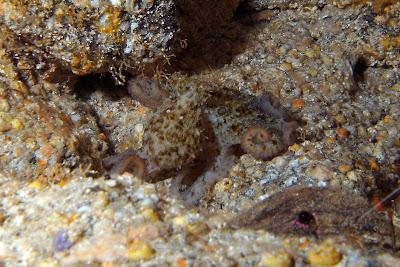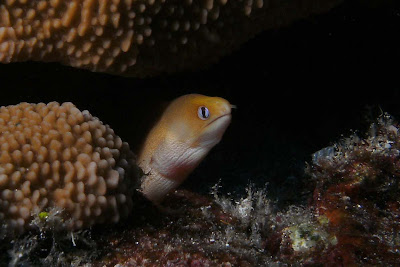Aloha, and welcome to the second installment in a series of posts that examine the influence of manta ray shape, design or function in science and culture.
The image of a manta ray evokes a variety of responses from people. Many SCUBA divers appreciate the graceful fluidity of its movements as it seems to soar through the water. Technically inclined persons can admire the manta's hydrodynamic efficiency with a shape that minimizes turbulence and drag. To others, a manta seems to embody the mysterious and sinister, a dark and almost mythological creature of dread.
Today's subject is the 1953 film
The War of the Worlds. This movie, an adaptation of the H.G. Wells classic novel, is considered a sci-fi classic and introduced what were (at the time) ground-breaking special effects. A central component of these effects were the Martian war machines designed by artistic director Albert Nozaki. In updating the story for a modern audience, Nozaki discarded Wells' mechanical tripods and re-imagined them as sleek, stealthy and sinister appearing...
...
MANTA RAYS !
Just look at the thing! Even as a little kid watching this on
Saturday Night at the Movies I could tell these were manta rays transformed into really cool-looking alien craft. For die-hard sci-fi purists, note that in the photo above, the faint green columns of "sparks" under the craft. Nozaki, faithful to the novel, had his machines walking on "tripods" of force rather than mechanical legs.
The Internet Movie Data Base states in its "Trivia" for
War of the Worlds "Albert Nozaki based his designs of the Martian machines on the shape and movement of manta rays". While the shape may have sprung from an appreciation of aerodynamics, it is probably just as likely that the form was chosen because it evoked feelings of fear, foreboding and the unknown. To quote the website
Roger's Rocketships "Their appearance was halfway between the current mysterious Flying Saucers that everyone was talking about and manta rays. Neither association was good. Flying saucers frightened people and manta rays were something people avoided because of their sting. And well they should!"
Divers out there will immediately protest that mantas have no stinger, but that's not the point (ha!). Even today, the majority of people think
manta ray and
stingray are synonymous. All the more so in the pre-
Animal Planet early 1950's. Roger's observations accurately reflect the conventional wisdom of the time as well as the film-maker's intentions. In the 50's mantas were scary.
The down-turned wing-tips add to the manta-like appearance as does the central green light positioned where a manta's mouth would be. Disrupting the manta-effect is the long "gooseneck" projection from whence came the "death ray" which reduced anything it touched to cinders (a
stinger, if you like).
If you enjoy sci-fi (as I do) check out Roger's website at www.rogersrockets.com. He has a lot of info on spacecraft from classic science fiction films and you can even purchase schematics of the Martian war machine.
Mr. Nozaki's imaginary craft continues on even today. Sci-fi fans purchase and build models of what they like to call "manta ships" from that long-ago movie. And you can count on other sci-fi references coming up in future posts on
The Manta's Shadow.
















































